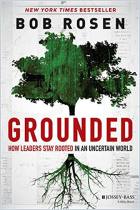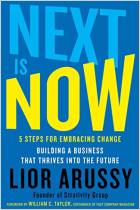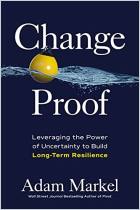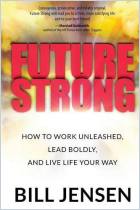Those who best adapt to change survive. Considering the ever-increasing speed of change, however, you likely play it safe by avoiding changeor switching to autopilot in the face of challenge – and fall behind. Psychologists Bob Rosen and Emma-Kate Swann offer a simple formula for adapting to uncertainty: “Go deep” within yourself to raise your self-awareness, “think big” to see opportunity in change, “get real” to recognize and engage your strengths and imperfections, and “step up” to influence those around you and make an impact on your community.
Today’s landscape of constant change challenges you to increase your awareness: of yourself, of others and of your surroundings.
Charles Darwin’s groundbreaking scientific discoveries demonstrated that to survive, species must adapt to their changing environment. Today’s world, however, changes faster than you – or anyone – can possibly adapt. Your daily experiences disrupt your sense of stability in both your professional and personal life, presenting complexity when you yearn for clarity. These challenges offer opportunities, but many people fail to adapt with sufficient speed to embrace them.
Factors that might slow your adaptation in the midst of this dynamic environment include limited self-awareness, an unwillingness to challenge your biases and assumptions, fear of uncertainty, and lack of ability to see possibilities in a changing landscape.
When you react to change by reverting to old patterns and habits, you damage your chances of survival and miss out on opportunities to prosper in the future. Instead, adapt to your changing world. Make deliberate choices and take action after conscious self-examination – this will help you confront uncertainty ...
Bob Rosen, an organizational psychologist, is CEO of Healthy Companies International and the author of Grounded: How Leaders Stay Rooted in an Uncertain World, and other books on leadership and business success. Emma-Kate Swann is a psychologist and executive coach specializing in organizational change, transformation and leadership development.

















Comment on this summary or Start Discussion